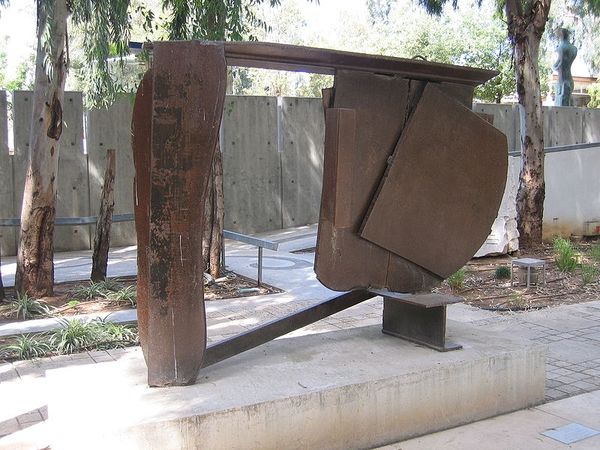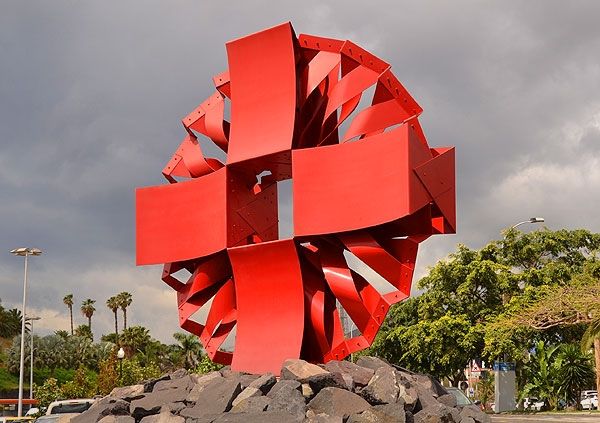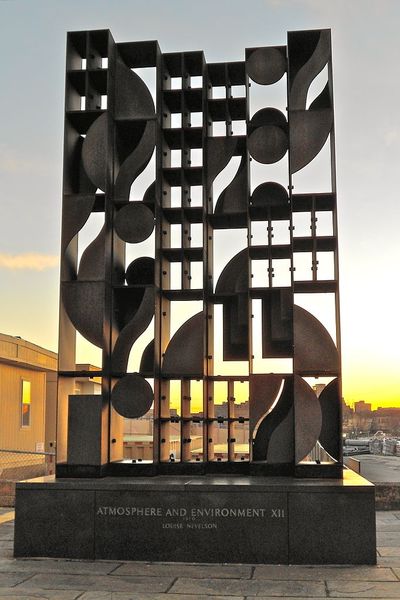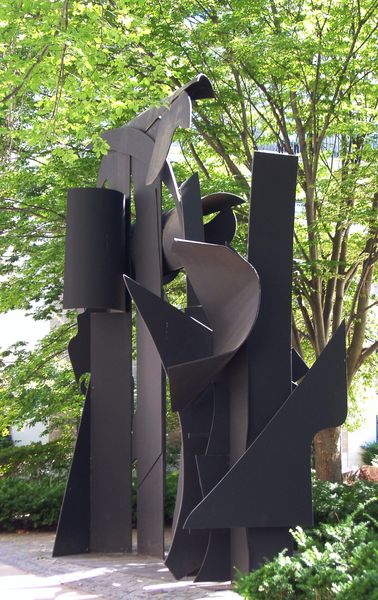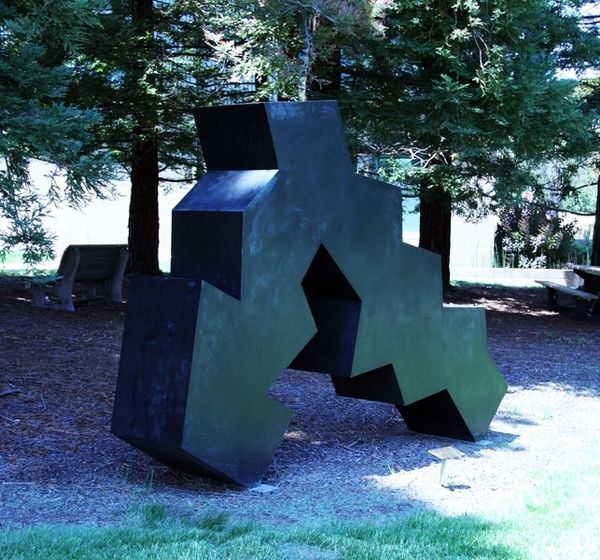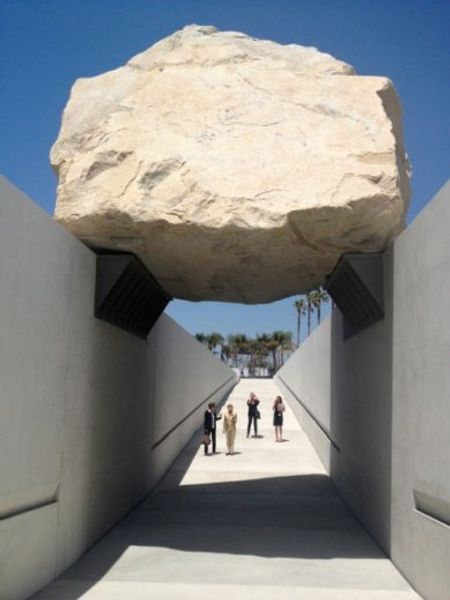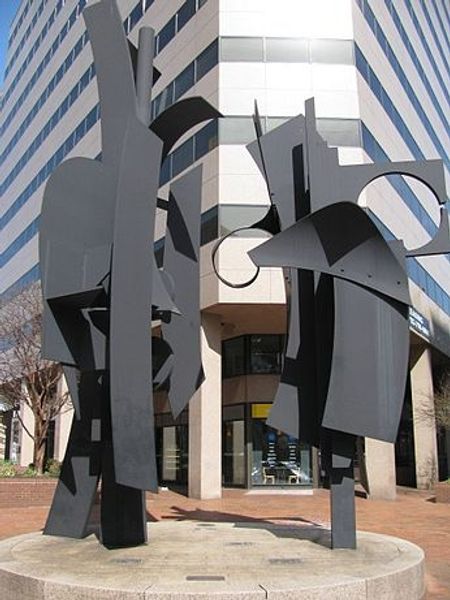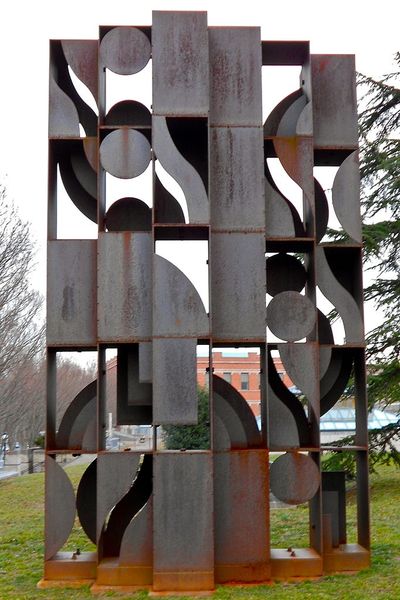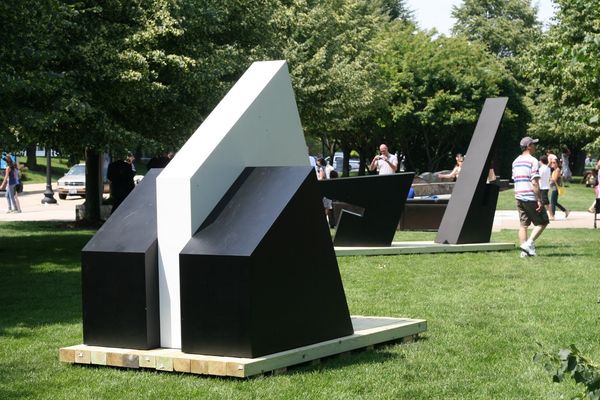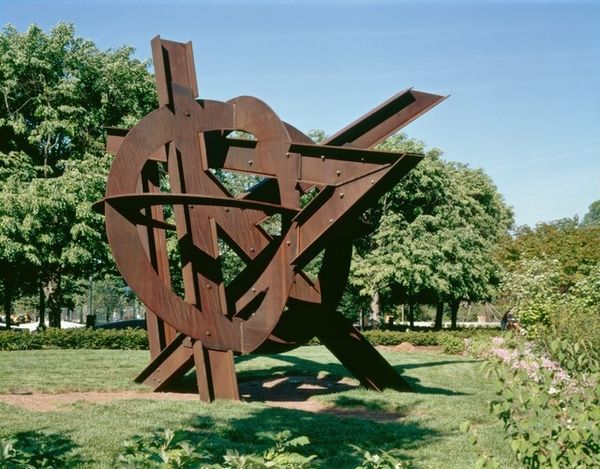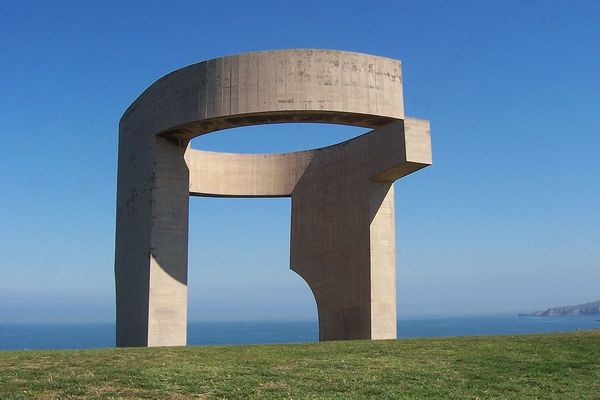
metal, public-art, sculpture
#
public art
#
conceptual-art
#
metal
#
sculpture
#
public-art
#
geometric
#
sculpture
Copyright: Robert Indiana,Fair Use
Curator: What strikes me immediately about Robert Indiana’s 1977 sculpture, "Ahava," is the sheer materiality of it. Look at the rough texture of the metal, its imposing presence. It really asserts its physical reality in this space. Editor: It's undeniably impactful, isn't it? And considering that "Ahava" translates to "love" in Hebrew, it poses the question: what kind of love is being represented here? Is it the enduring, weighty kind, given how permanent the steel seems? Is it a romantic kind or familial love? Curator: That’s interesting because Indiana initially became known for his Pop Art renderings of the word "LOVE." However, here, shifting to Hebrew changes the context. He worked with various fabricators over his career and in various cities, but "Ahava" makes me think about the actual act of fabrication here. How did workers grapple with this metal, bend it to his will? Editor: Exactly, and in relation to Israel specifically, post-1973 Yom Kippur war, what resonances might this very solid declaration of "love" have had? We cannot divorce the materials, the place and the context from this artistic message. Was Indiana responding to a need for love in a time of conflict? Or even aligning his voice in support of a nation, of an idea? Curator: Right. How did this piece become enmeshed with larger global supply chains and Israeli national identity formation? Did this piece challenge or reaffirm existing power dynamics? Editor: It does add layers, doesn’t it? We are encouraged to think of love as free and universally accessible, yet we find it forged here out of metal. What would it have meant for a local community to interact with it daily? Was it a source of hope, solidarity, or did it symbolize something more complex about power and ownership? Curator: Ultimately, it encourages viewers to engage in material encounters and ideological discussions, both within art's frame and its socio-historical conditions. It bridges abstract sentiments and global material realities, offering opportunities to re-examine what "love" entails and what love does. Editor: I find this reframing of "love," from Pop Art to steel and Hebrew, speaks volumes about the mutable nature of art—its dependence on culture and context and the necessity of always considering it within that network.
Comments
No comments
Be the first to comment and join the conversation on the ultimate creative platform.
